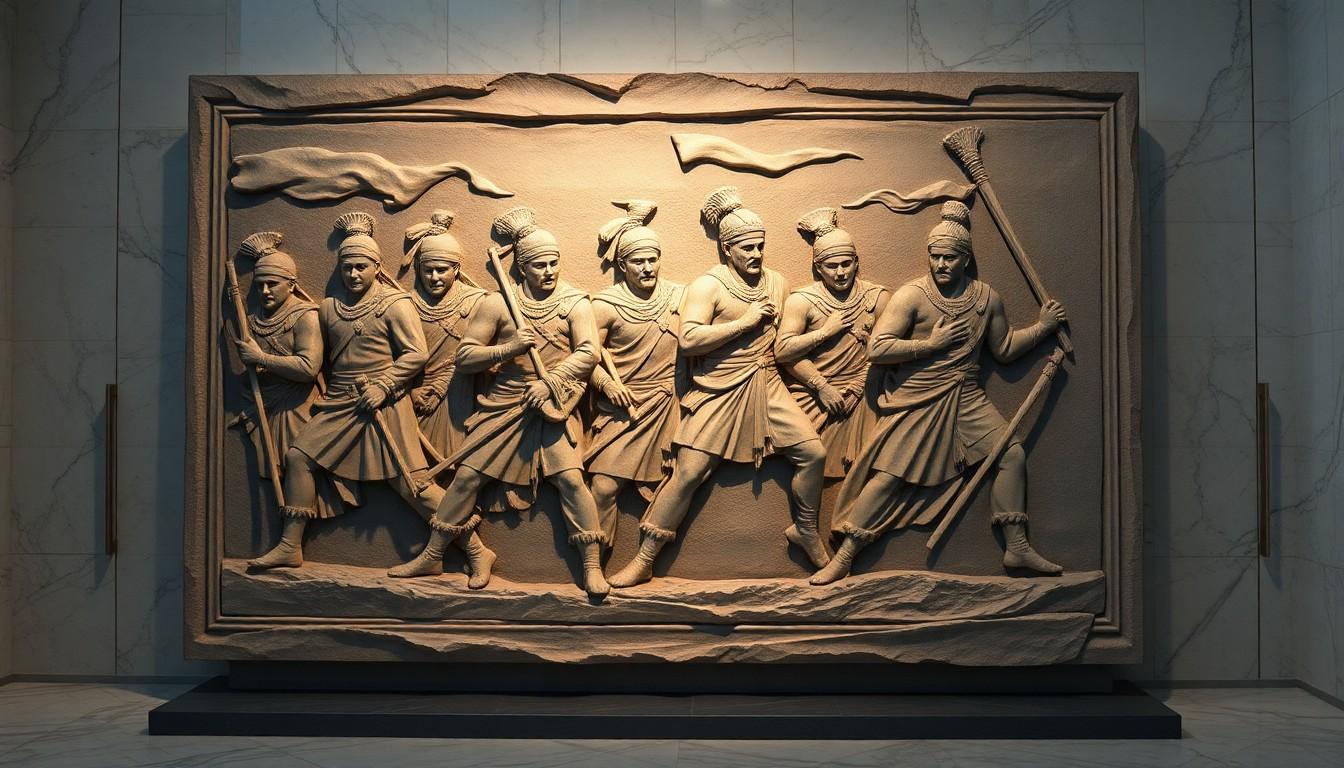
What Is a Relief Sculpture? Discover Its Rich History and Stunning Techniques
When it comes to art, not all masterpieces are created equal. Some leap off the canvas while others prefer to hang out on walls, literally! Enter relief sculpture, the art form that’s like a three-dimensional handshake between painting and sculpture. It’s not just a pretty face; it’s a way to add depth and drama to any space, making viewers feel like they’ve stepped into a story.
What Is A Relief Sculpture
Relief sculptures represent a fusion of artistry and craft. Artists create these works by carving images into a flat surface, allowing the figures to project outward. This technique creates a play of light and shadow that adds depth.
Relief sculptures exist in several forms, including bas-relief and high relief. In bas-relief, figures are only slightly raised, maintaining a closer connection to the background. Conversely, high relief features figures that project significantly from the background, sometimes extending almost completely into the surrounding space.
Materials commonly used for relief sculptures include stone, wood, and metal. Stone sculptures often exhibit durability, contributing to their historical significance in architecture. Wood provides versatility, allowing for intricate designs. Metal offers strength and the potential for detailed embellishments.
Identification of relief sculptures occurs in various historical contexts. Ancient civilizations employed this art form to tell stories and commemorate events. Roman and Greek temples frequently featured intricate reliefs that conveyed myths and legends.
Cultural relevance remains vital to relief sculptures. They serve as storytelling tools, capturing moments in time. Artisans convey cultural values and historical narratives through these pieces, making them important for understanding societies.
Creating a relief sculpture involves a meticulous process. Artists begin with sketches, developing the composition before transitioning to the chosen material. Sculptors carve layer by layer, refining details to achieve the desired effect.
Ultimately, relief sculptures offer a unique blend of visual and tactile experiences. They invite viewers to engage with the art, prompting exploration of both form and content. This interaction enriches the overall appreciation of the artistry involved.
Types Of Relief Sculptures
Relief sculptures exist in various forms, each with distinct characteristics that define their visual impact.
High Relief
High relief sculptures involve figures that project significantly from the background. They possess a depth that often requires substantial carving techniques. In these pieces, the figures can appear nearly free-standing, allowing for dynamic perspectives. Light interactions highlight the dramatic contours, creating striking shadows that enhance visual interest. Historical examples include ornate decorations on Roman temples and Gothic cathedrals, showcasing extraordinary craftsmanship. These sculptures often convey powerful narratives, drawing viewers into their stories.
Low Relief
Low relief sculptures feature figures that are only slightly raised from the background. The subtle projection creates a more subdued visual effect than high relief. Artists focus on fine details, emphasizing craftsmanship with less dramatic shadow play. Commonly found on coins and plaques, low relief offers elegant simplicity that complements architectural settings. Prominent historical works include the friezes of ancient Greek temples, which narrate mythological events with grace. This type of relief allows for intricate designs while maintaining a harmonious connection with the surrounding space.
Techniques Used In Relief Sculpture
Relief sculpture employs several techniques that enhance the depth and detail of the artwork. Two primary methods include carving and modeling, each contributing uniquely to the finished piece.
Carving
Carving involves removing material from a solid surface, shaping the figure by cutting directly into the substrate. Artists often use chisels and gouges for this process. The technique requires precision to ensure figures emerge distinctly from the background. Bas-relief utilizes shallow cuts for subtle projections, while high relief demands deeper carving for significant protrusions. Stone and wood are popular materials for this technique due to their durability and workability. Ancient artisans frequently relied on carving to create intricate narratives in historical reliefs.
Modeling
Modeling incorporates adding material to create forms, typically using malleable substances like clay or wax. Sculptors can manipulate these materials easily, allowing for detailed expressions and textures. This technique provides a different depth perception compared to carving, as it builds up layers rather than subtracting them. Artists can create dynamic figures that represent movement and emotion effectively. Modeling often serves as a preparatory stage for casting in metal or creating a mold for reproduction. Both techniques complement each other, enhancing the visual storytelling intrinsic to relief sculpture.
Historical Significance Of Relief Sculptures
Relief sculptures play a crucial role in the history of art, reflecting the cultural narratives of their time.
Ancient Civilizations
Relief sculptures from ancient civilizations provided insights into societal beliefs and practices. Egyptian tomb reliefs often depicted daily life and religious ceremonies, reinforcing their spiritual importance. Additionally, Greek reliefs illustrated mythological stories that conveyed moral lessons. Roman relief sculptures adorned public buildings, showcasing military victories and civic achievements. Such artworks served not only decorative purposes but also acted as historical records, capturing events and ideals. Collectively, these examples highlight how relief sculptures connected communities through shared narratives and cultural identities.
Contemporary Artists
Contemporary artists continue to explore the potential of relief sculptures, pushing boundaries in both materials and themes. Artists like El Anatsui create large-scale installations that blend traditional techniques with modern concepts. With these works, they challenge viewers’ perceptions of materiality and space. Other artists, such as Robert Rauschenberg, incorporated mixed media elements, infusing relief sculptures with dynamic textures and layers. These modern approaches maintain the storytelling tradition while addressing contemporary issues, fostering dialogue about culture and identity. Through these diverse expressions, relief sculptures remain a relevant and evolving art form.
Creativity and Cultural Identity
Relief sculpture stands as a powerful testament to the intersection of art and storytelling. Its unique ability to create depth and engage viewers transcends time and culture. From ancient civilizations to contemporary artists, this art form continues to evolve while maintaining its core purpose of conveying narratives and societal values. The techniques and materials used in relief sculpture not only enhance its aesthetic appeal but also invite a tactile experience that resonates with audiences. As artists explore new themes and mediums, relief sculpture remains a vital expression of human creativity and cultural identity.
